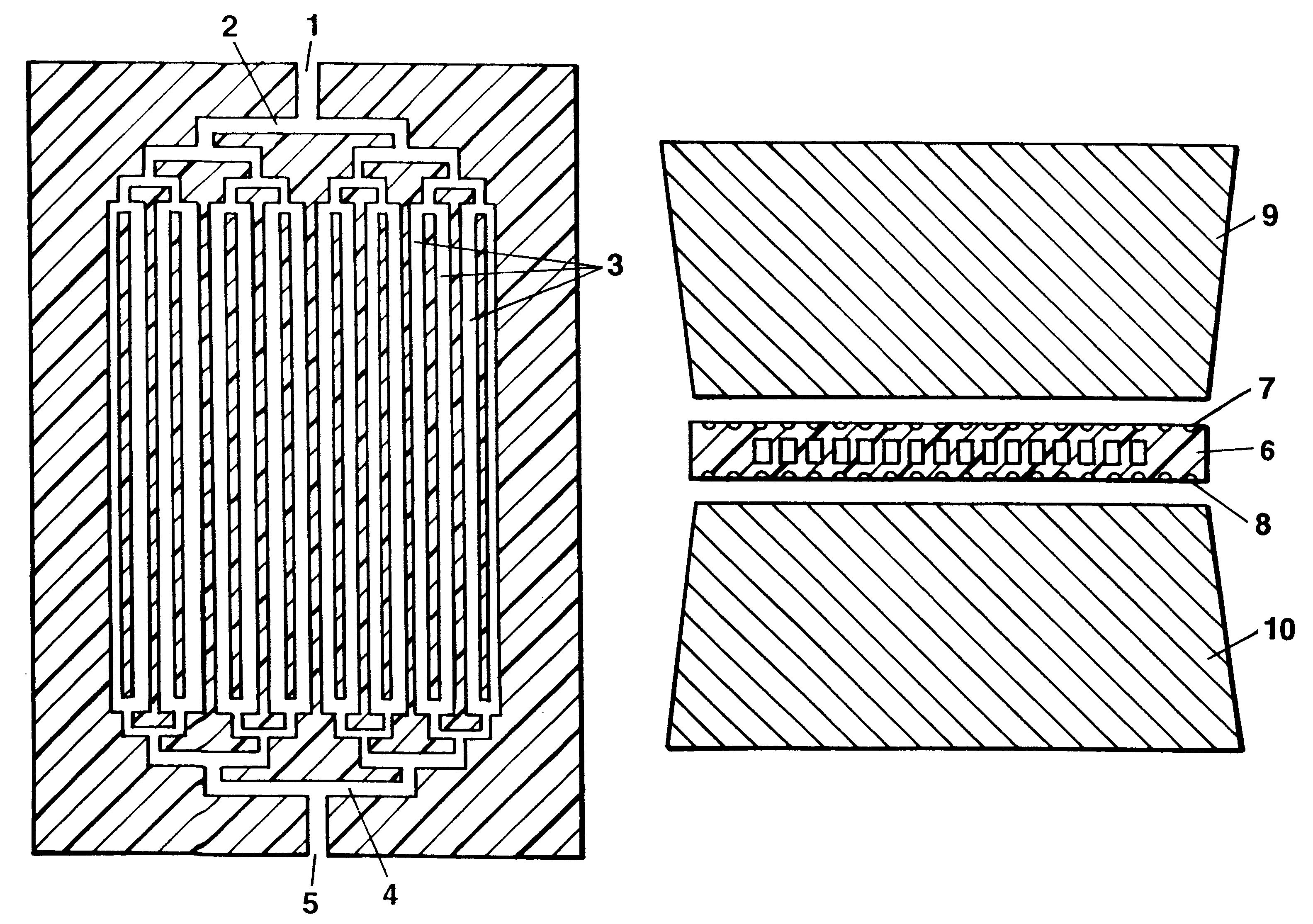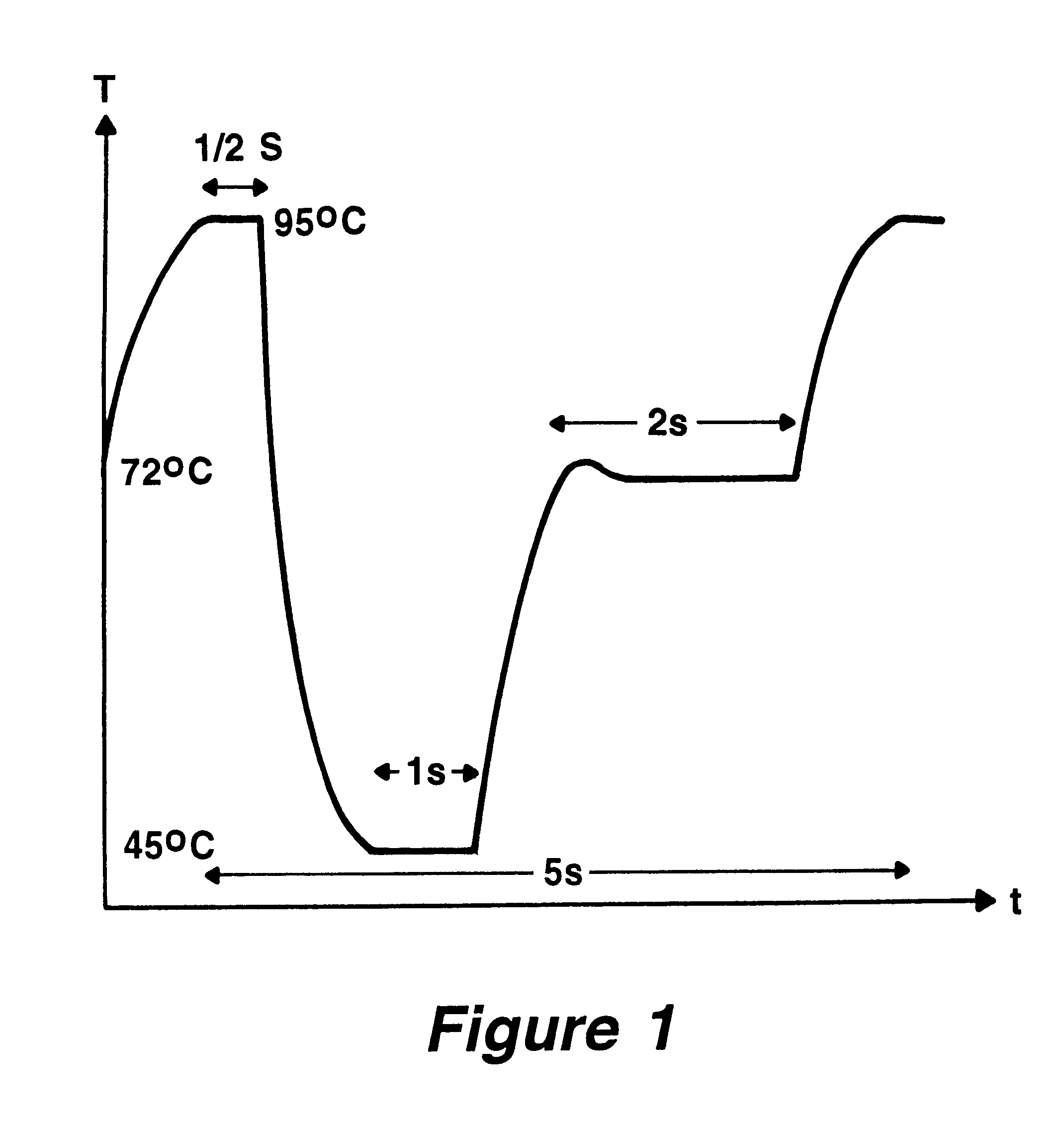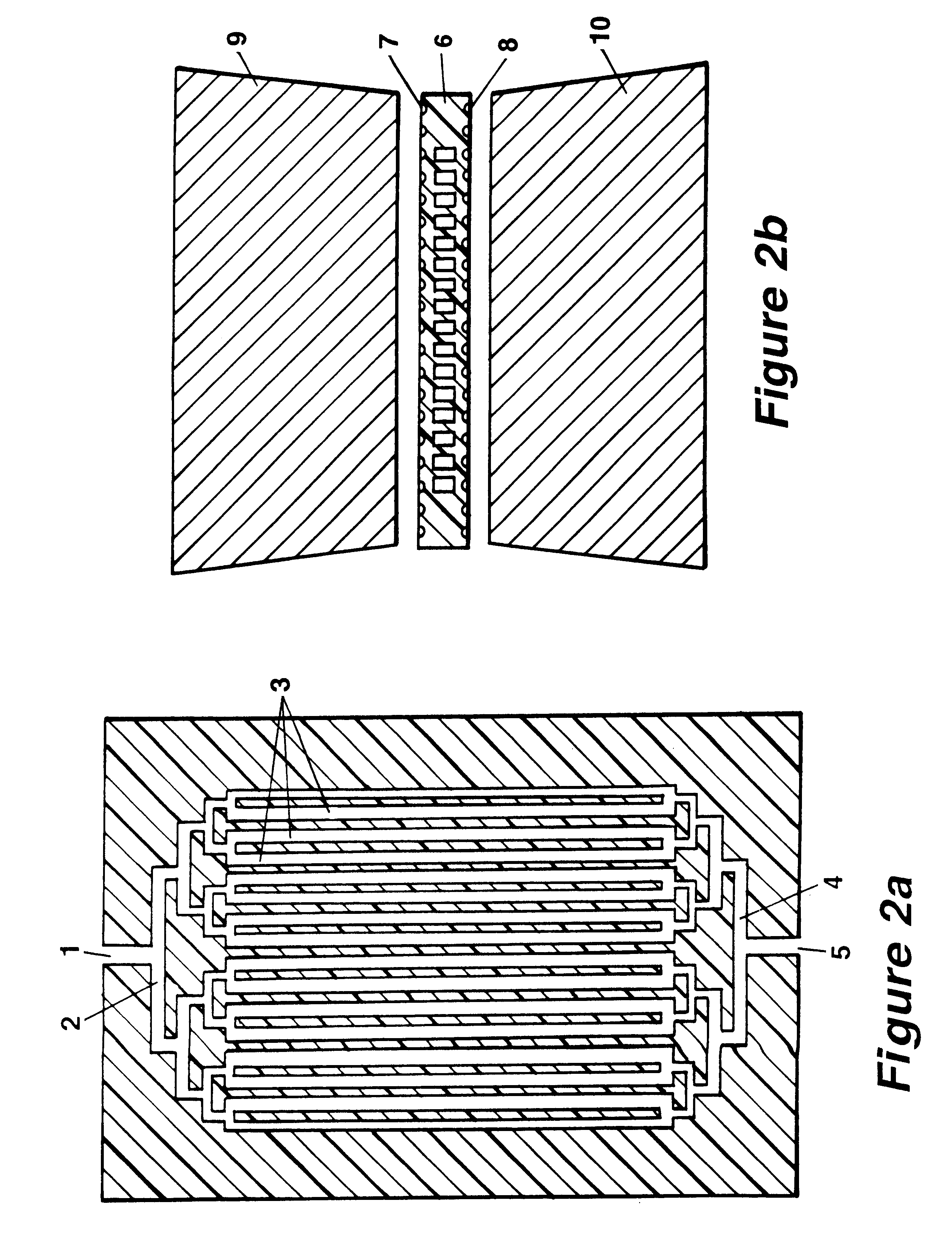Method and devices for extremely fast DNA replication by polymerase chain reactions (PCR)
a polymerase chain reaction and dna technology, applied in the direction of positive displacement liquid engine, laboratory glassware, instruments, etc., can solve the problems of insufficient time-saving, inability to rapidly analyze, and inability to achieve fast analysis, etc., to achieve high sensitivity of modem analysis methods and short cycle time
- Summary
- Abstract
- Description
- Claims
- Application Information
AI Technical Summary
Benefits of technology
Problems solved by technology
Method used
Image
Examples
Embodiment Construction
It is the basic idea of the invention to use, on the one hand, a pattern of very fine capillaries in close proximity to heating and cooling elements as a chamber system for the reaction solution in order to keep the heating and cooling-down times for the reaction solution extremely low, while on the other hand however keeping the flow rate for the reaction solution in the capillaries during the reconstruction phase of the DNA double strand using the polymerase as low as possible. The flow rate during the reconstruction phase should never exceed ten times the maximum capillary diameter prevalent there per second, while more favorable would be a medium flow rate of less than five maximum capillary diameters per second. The error rate for the reconstruction only approaches its minimum below a medium flow rate which is less than double the diameter per second. The maximum capillary diameter corresponds to the normal diameter for round capillaries, for rectangular cross sections that of ...
PUM
| Property | Measurement | Unit |
|---|---|---|
| diameters | aaaaa | aaaaa |
| volume | aaaaa | aaaaa |
| thickness | aaaaa | aaaaa |
Abstract
Description
Claims
Application Information
 Login to View More
Login to View More - R&D
- Intellectual Property
- Life Sciences
- Materials
- Tech Scout
- Unparalleled Data Quality
- Higher Quality Content
- 60% Fewer Hallucinations
Browse by: Latest US Patents, China's latest patents, Technical Efficacy Thesaurus, Application Domain, Technology Topic, Popular Technical Reports.
© 2025 PatSnap. All rights reserved.Legal|Privacy policy|Modern Slavery Act Transparency Statement|Sitemap|About US| Contact US: help@patsnap.com



